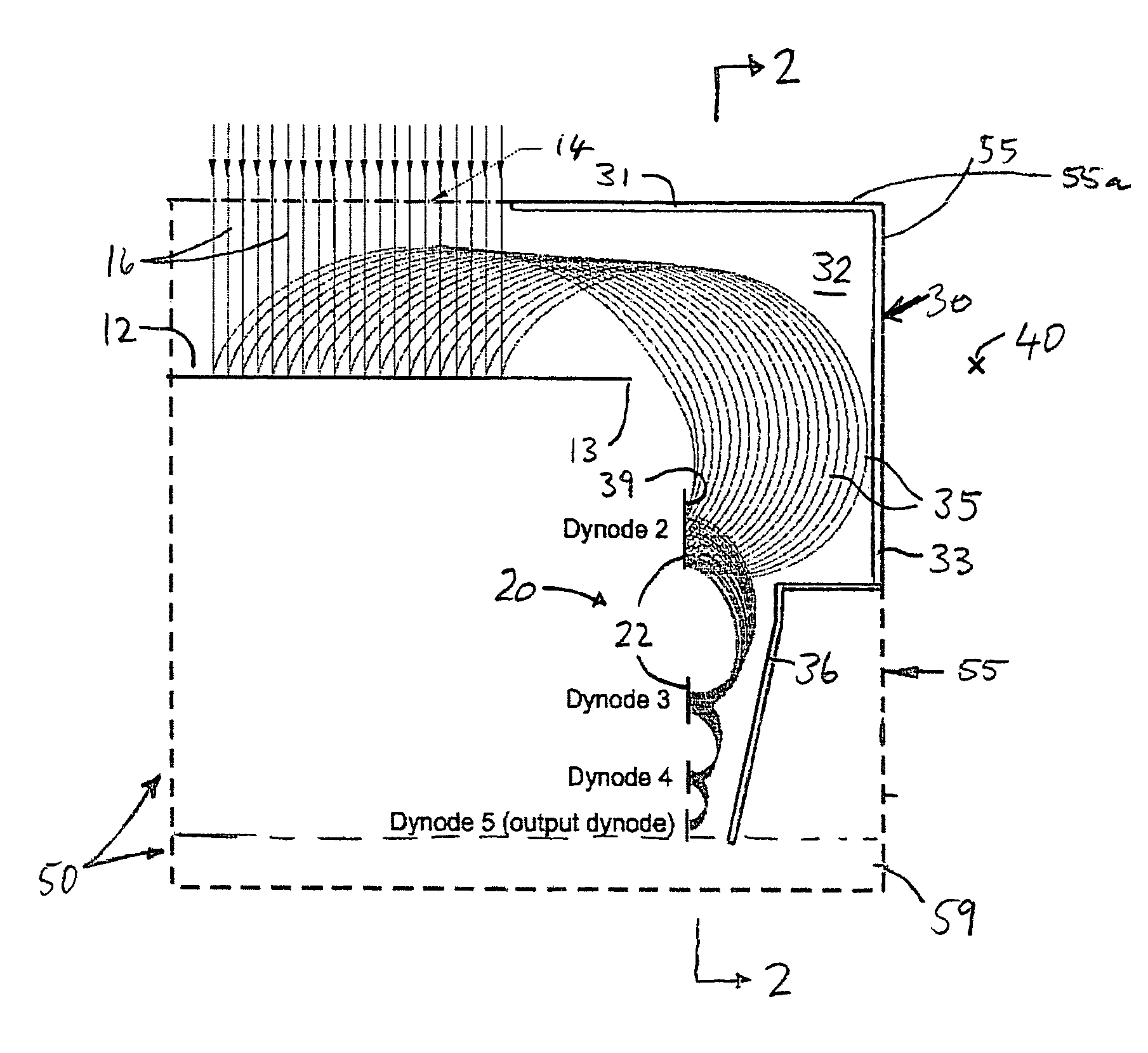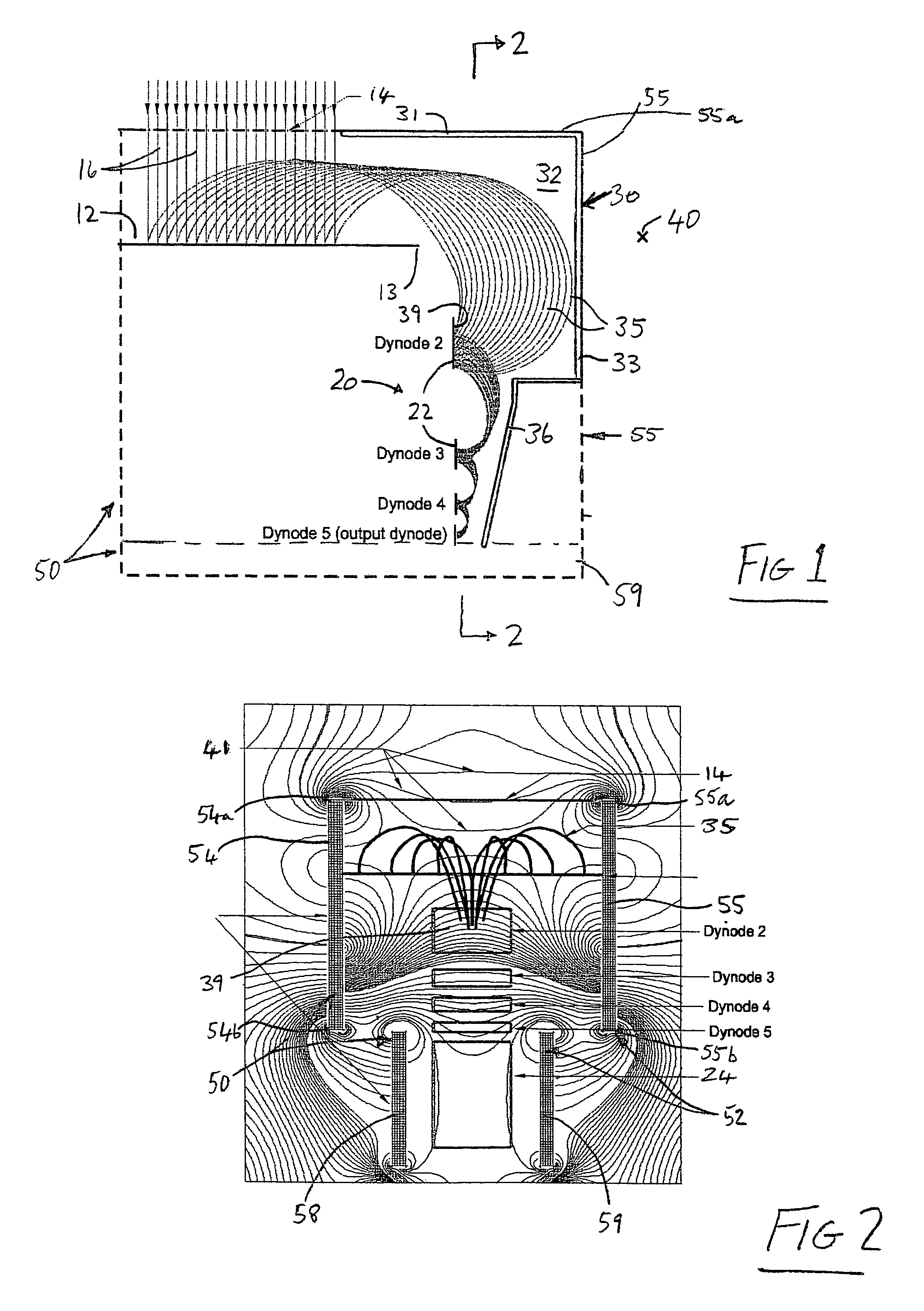Particle detection by electron multiplication
a technology of electron multiplication and particle detection, applied in the field of particle detection, can solve the problems of mismatch between the desired sensitive input area and add confusion in the interpretation of the spectrum
- Summary
- Abstract
- Description
- Claims
- Application Information
AI Technical Summary
Benefits of technology
Problems solved by technology
Method used
Image
Examples
Embodiment Construction
[0062]The illustrated electron multiplier 10 includes cathode means in the form of a relatively large ion impact plate 12 constituting an input dynode, designated dynode 1. Dynode 1 is disposed inwardly of an entrance grid 14 defining an input aperture. Typical input ion trajectories are indicated at 16.
[0063]A co-planar or linear array 20 of dynodes 22 extends at 90° to impact plate 12 in a direction behind and away from plate 12 relative to entrance grid 14. The plane of dynode array 20 lies slightly laterally of the adjacent edge 13 of plate 12. Dynodes 22 are designated dynodes 2, 3, 4 and 5 and are successively smaller in functional surface area. Dynodes 22 are also at a spacing from the preceding dynode that successively diminishes from dynode 2 to dynode 5. Dynode 5 is the output dynode of the focussing configuration and marks the start of the amplifying section 24 (FIG. 2).
[0064]A rectangular plate 30 is disposed as shown as an electrode for shaping an electrostatic field be...
PUM
 Login to View More
Login to View More Abstract
Description
Claims
Application Information
 Login to View More
Login to View More - R&D
- Intellectual Property
- Life Sciences
- Materials
- Tech Scout
- Unparalleled Data Quality
- Higher Quality Content
- 60% Fewer Hallucinations
Browse by: Latest US Patents, China's latest patents, Technical Efficacy Thesaurus, Application Domain, Technology Topic, Popular Technical Reports.
© 2025 PatSnap. All rights reserved.Legal|Privacy policy|Modern Slavery Act Transparency Statement|Sitemap|About US| Contact US: help@patsnap.com


